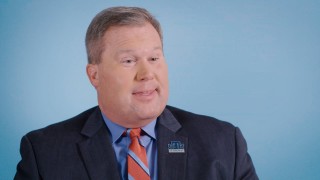How college presidents are planning for fall 2020 and beyond

Key takeaways
- Many institutions are working hard to improve their online delivery.
- Student engagement goes hand-in-hand with retention.
- Student well-being continues to be a critical factor.
Higher education leaders around the world are grappling with difficult decisions about when and how to reopen this fall. They share a wide range of concerns, from student well-being and access to course delivery and regulatory hurdles. Yet they also share a sense of optimism following the ingenuity and hard-won successes of the spring 2020 shutdown.
From countries as varied as the Bahamas, Malaysia, Scotland, the United Arab Emirates, and the United States, leaders say they believe many coronavirus-related adaptations are here to stay. They also see higher education playing a leading role in helping their communities create a more advanced, equitable future.
The leaders shared their plans and visions for the coming year during an Ellucian Live Online panel moderated by Ellucian President and CEO Laura K. Ipsen. (Comments have been edited for length and clarity.)
Here are some of the discussion’s key highlights:
Many institutions are working to enhance online delivery. Rose Bellanca, president and CEO of Washtenaw Community College, said her institution will offer three options this fall: an online, asynchronous model; a hybrid model for computer and technical education classes; and an online, synchronous classroom, “which is more comforting to our students who have never been online students before, as well as to our faculty.”
At the University of the Bahamas, faculty, staff, and administration are getting ready to “continue our emergency remote teaching and administrative operations as necessary,” said Rodney Smith, the university’s president. This summer, the university’s faculty members are working to become certified in online teaching “in order to be prepared for these times of uncertainty.”
Multi-campus institutions see both challenges and opportunities in the pivot to online work and instruction. The University of the Bahamas, which has multiple regional campuses spread across the archipelago, has “to find out how to make education available to all Bahamians, no matter where they're working, and to throughout the Caribbean as well as throughout the world, in terms of our specialized hybrid courses in particular,” said Smith. “We started moving to creating more online degree programs several years ago. The pandemic has actually propelled us faster, and it's opened doors of opportunities for us. I don't think we're going to go back to what we used to be before. I think we're going to find ways to continue to explore how to make sure that our students have access to education and training.”
Heriot-Watt University, with five campuses in three countries, is subject to multiple regulatory frameworks and reopening requirements. “For us, our challenge is every campus is very different from each other because of the restrictions in country,” said Paul Travill, academic registrar at Heriot-Watt. But the institution has already “learnt quite a lot around how we can do things differently to support students.”
With distancing requirements drastically reducing classroom capacity, “our approach for next academic session is a responsive blended learning approach,” he said. “Everything will be available online, and as we can we’ll bring more students back to campus at different phases in each country.”
“But responsive blended learning also means some real benefits for us that we've always struggled with,” Travill said, "like international students traveling around the world who are reliant on getting flights at the right time, and visas at the right time, to get to the country they're studying—and often missing the first couple weeks of the term. With responsive blended learning, we start online and they can join us on campus in week three, four, or five, having not missed anything to start with. And if we get into a situation in any one campus again where we suddenly have to lock down, responsive blended learning carries on, and our global teaching teams can support each other around the world.”
Students and faculty members are collaborating in new ways. “We found that our faculty members and our students were working together and helping each other out,” Smith said. “As we know, many students know a lot more about the technology than some of our faculty members. Some of our faculty members have expressed delight in getting to know their students better through this process.”
Student engagement goes hand-in-hand with retention. “We know that student engagement, whether on-ground or online, is critical to making students feel as if they're a part of the campus—and that's also a retention strategy,” said Bellanca. During the shutdown, the college sponsored a number of online student activities, including recreational group offerings like online dance classes and a virtual talent show.
Travill agreed about the importance of supporting students outside the classroom. “How we build that university community and really get the engagement of students” will matter more than ever this fall, he said, since “there's a difference between a student who chooses to study online and a student who wants to come to campus but can't at the moment. We're working really hard at how we're going to build welcome week at the start, how we get them built into small communities online so they're able to start to support each other, and how our support services will have to actually adapt.”
Student well-being continues to be a critical factor. As students have struggled with financial, employment, logistical, and mental health concerns during the shutdown, colleges have stepped in to help. “Well-being services and career services are as vital to the students' experience as the events in the classroom,” Travill said.
At Washtenaw, the college worked with Ellucian to move their wraparound services completely online, including an assistance program that offers 24/7 counseling. They created a student emergency fund and moved their drug and alcohol recovery program online. And they’re increasing outreach and awareness through emails, weekly chat sessions, and virtual president’s coffees with students. “That feedback has helped me understand where the students are,” said Bellanca.
“One of the lessons we've learned was a bitter one,” she continued. “When we had to go to emergency remote teaching, many of our students did not have access to technology or to WiFi.” In response, the college immediately began fundraising to provide students with laptops and WiFi access. They also started a food pantry to help students suffering from food insecurity. “We have discovered a whole lot about our student population, and we've introduced programs to make sure that our students have what they need moving forward,” Bellanca said.
Colleges are taking a thoughtful approach to issues of race, diversity, and social justice. Together with global protests against racial injustice and police violence, higher education’s sudden pivot to digital has cast a harsh light on deep inequities in their communities.
“We thought we had all these practices in place that would adjust the digital divide, only to find out that with technology, it identifies how bad that divide is,” said Bellanca. She sees data as a key element in effectively addressing the problem going forward. “If we don't collect the metrics and find out if what we're doing is working, and how many people have we connected, and what's happening—it's not going to matter. It's more than how it looks. It has to be real.”
Colleges are also taking a broad, community-based approach. Washtenaw is planning a free five-seminar series on racial equality that will be open to the public. Heriot-Watt, meanwhile, draws on its international presence with its “Go Global” program, which enables any of its students to study for a year at one of the university’s other campuses around the world. “Enabling students to mix and experience different cultures and different challenges around the world—it's a really powerful tool that our students find incredibly enlightening,” said Travill. “We also have student associations in each campus country working with the president around what the key challenges in each campus are, because they are incredibly different across the world.”
Enrollment is still a fluid situation. Washtenaw, which has ongoing registration and began summer enrollment in May, initially saw a significant and uncharacteristic decline in summer term enrollment. While the college was able to dramatically reduce that gap through outreach and other strategies, Bellanca expects a slow start to fall as well—though she believes the college’s range of learning options will help students decide to enroll.
At the University of the Bahamas, however, students will benefit from a free tuition system introduced in August 2019. “That allows more students—particularly first-generation college students—to come to the university, and as a result, we have seen an increase in our enrollment numbers,” said Smith. “Normally we bring in around 1,200 freshmen. This fall we're looking at anywhere between 15 to 1,700 freshmen coming in,” he said, including “any of our Bahamian students who studied abroad in other countries at other universities who’ve come home. We're finding that they are preferring to spend at least the fall semester” enrolled at the university.
College leaders are applying the lessons of spring 2020 into their future planning. Smith sees this year’s upheaval as an opportunity to help his students, institution, and community grow. “We need to increase our efforts to “become more diversified, more self-sufficient. We have a small island sustainability research center that we just opened a couple years ago. And we are introducing new graduate and research programs around marine science. As a nation, as a country, we have to help our people become entrepreneurial, become more self-sufficient, utilize technology a whole lot more at a global level.”
“Just like higher education institutions are adapting and finding new ways to deliver education and training, I think that as a small nation, we are going to continue to adapt and find new ways to survive and become more self-sufficient and sustainable as we move forward.”
Travill also sees grounds for optimism. “We've learned that students are engaging well, and in fact some of the take-up rates of some of our foundation programs has been higher during the lockdown than we would've had in previous times—which is a great indicator that our students want to get back into education,” said Travill. “There's not a feel they're going to hang on and wait and see what happens. They're almost pushing us to the next challenge, as to what is next year going to look like.”




